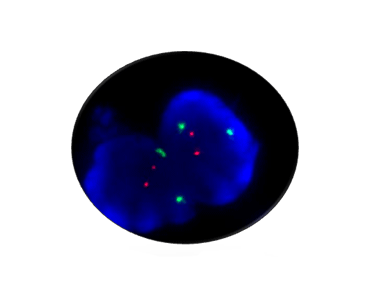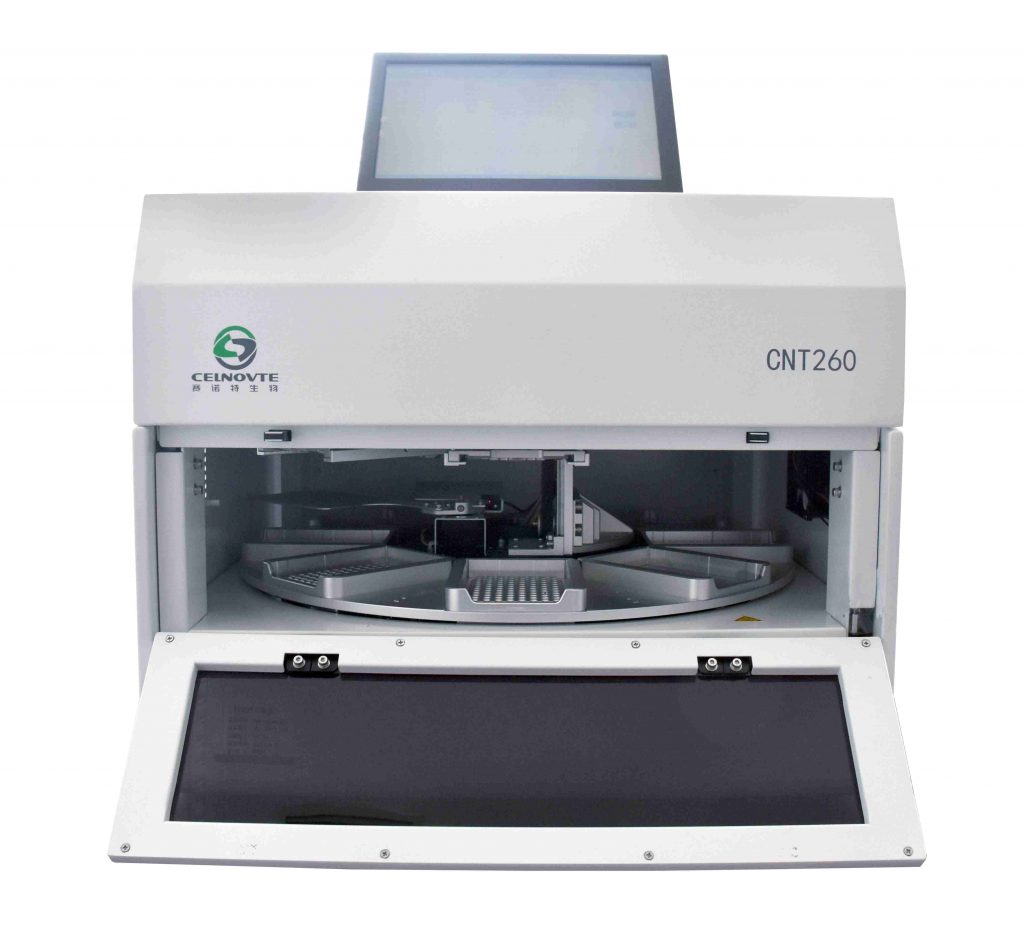Molecular Diagnostics vs Traditional Diagnostics: A Complete Comparison
2025-11-07
By admin

In the quickly changing field of medicine, attention has moved greatly from a standard approach to precision medicine. This means adjusting treatments to fit the personal genetic structure of a patient and their illness. This major change has come from a big shift in diagnostics. It goes past what we can spot under a regular microscope to what we can read from the basic plan of life. The main actors in this growth are traditional diagnostics and their strong follow-up, molecular diagnostics.
Grasping the contrasts between these two methods is key for any clinical or research lab that wants to remain ahead in patient care. As a top provider in creating modern diagnostic tools, Celnovte is committed to helping labs with the technology to close this divide. This article gives a full contrast of molecular and traditional diagnostics. It also describes how your lab can use the strength of molecular details.
The Bedrock of Diagnosis: Understanding Traditional Methods
Traditional diagnostics have served as the base of clinical work for a long time. These ways are set up to find the presence of a sickness by watching its impacts on the body, its cells, or its chemistry.
Observing the Effects of Disease
Methods like microbiology cultures, histological staining (H&E), and biochemical assays are common in the standard lab. A culture, for instance, grows tiny organisms over days to spot a pathogen based on its shape and activity. In the same way, histology lets a pathologist find odd cell forms linked to cancer. These methods focus on the phenotype. That refers to the visible traits of a sickness.
Enduring Strengths and Critical Limitations
For many years, these methods have been helpful and still work for routine checks. They are usually affordable and rely on set routines. However, their weak points are showing more in a time that calls for quickness and exactness. Main problems include:
• Slow Turnaround Time: A bacterial culture might need days or weeks. This holds up important treatment choices.
• Low Sensitivity: Many tests need a large amount of a pathogen or marker to show a positive outcome. As a result, this can cause false negatives.
• Limited Scope: They cannot spot genetic risks for sickness, find viruses that won’t grow, or give the exact marker info required for focused cancer treatments.
The Molecular Revolution: Decoding the Language of Life
Molecular diagnostics marks a basic change from watching the impacts of a sickness to reading its direct source in the genetic code.
Analyzing the Genetic Blueprint
Rather than looking at cell shape or protein work, molecular diagnostics check nucleic acids—DNA and RNA. Techniques like polymerase chain reaction (PCR) and In Situ Hybridization (ISH) let experts detect, measure, and study certain gene sequences, changes, or gene expression levels with unmatched accuracy. This opens a direct view into the basic ways of sickness.
The Triple Advantage: Speed, Sensitivity, and Specificity
The use of molecular diagnostics is speeding up because it fixes the main weak points of traditional methods. For example, based on some market studies, the worldwide molecular diagnostics market is expected to expand significantly. This growth comes from the increasing cases of infectious diseases and cancer. This is a widely known pattern, and you might want to check the newest market info on your own. The main pluses are:
• Speed: Results can come in hours, not days. This allows fast clinical action.
• Sensitivity: These tests can find tiny amounts of viral DNA or one cancer change from a small tissue sample.
• Specificity: They can tell apart similar pathogens or spot the precise markers that forecast a patient’s reaction to a certain focused therapy.
A Head-to-Head Comparison: Where Molecular Diagnostics Excel
| Feature | Traditional Diagnostics | Molecular Diagnostics |
|---|---|---|
| Analyte | Phenotype (proteins, cell morphology) | Genotype (DNA, RNA) |
| Turnaround Time | Days to weeks (e.g., cultures) | Hours to a few days |
| Sensitivity | Often low to moderate | Extremely high |
| Application | General infection, basic pathology | Personalized medicine, oncology, virology, genetic testing |
Equipping Your Lab for the Future of Diagnostics with Celnovte
Taking on molecular techniques can appear tough. It calls for fresh workflows and equipment. Celnovte makes this shift easier by offering a full, connected set of high-quality instruments and reagents. These are made for the current molecular pathology lab.
The Critical First Step: Flawless Nucleic Acid Extraction
The quality of any molecular test relies fully on the purity of the starting sample. The Celnovte Nucleic Acid Extractor is an automated option built to provide high amounts of pure DNA and RNA from different sample types. By handling this vital first step automatically, it cuts down on human mistakes. It also ensures the steady quality needed for dependable later uses like ISH and sequencing.
Visualizing Genes Directly in Tissue: The Power of ISH
In Situ Hybridization (ISH) is a strong technique that lets you see certain DNA or RNA sequences within the shape context of a tissue section. Celnovte supplies a full range of ISH options to fit various lab needs:
• CISH (Chromogenic ISH): This method uses a color reaction visible with a standard bright-field microscope. It allows easy blending into current pathology routines.
• FISH (Fluorescence ISH): Perfect for finding gene fusions or increases with sharp detail using fluorescence microscopy.

• SUPER-ISH™: Celnovte’s own, high-sensitivity tech aimed to give brighter signals and clearer outcomes. This leads to more certain diagnoses.
Automation and Consistency with Advanced Instrumentation
The ISH process is complex and includes many exact steps. The Celnovte ISH Processor handles this whole workflow automatically, from removing paraffin to hybridization and signal spotting. This not only saves technician time but also greatly boosts repeatability and standard levels across samples. Such consistency is vital for clinical correctness.
A Complete, Integrated Solution
Celnovte offers more than single items; we provide a full answer. Our range includes all the needed Consumables, reagents, and detection systems. All are tuned to work together without issues. By picking Celnovte, your lab gets a checked, start-to-finish workflow for advanced molecular diagnostics.
The future of medicine is molecular. While traditional diagnostics will keep a place, the way to better patient results lies in the exactness, quickness, and details of molecular checks. Work with Celnovte to outfit your lab with the tools required to guide this diagnostic change. Reach out to our experts today to learn how our automated instruments and advanced ISH options can boost your skills.
FAQ
Q: What is the main difference between molecular and traditional diagnostics?
A: Traditional diagnostics detect the effects of a disease (like cell morphology or protein levels), while molecular diagnostics analyze the root genetic cause by examining DNA and RNA. This makes molecular tests much more sensitive and specific.
Q: Are molecular diagnostics more expensive than traditional tests?
A: While the initial investment in instrumentation and reagents can be higher, molecular diagnostics can be more cost-effective in the long run. They provide faster, more accurate results that can reduce hospital stays, prevent ineffective treatments, and guide targeted therapies, leading to better overall patient outcomes.
Q: What kind of molecular diagnostic products does Celnovte offer?
A: Celnovte provides a comprehensive suite of solutions for molecular pathology, including automated Nucleic Acid Extractors, ISH Processors, and a portfolio of ISH probes like CISH, FISH, and our high-sensitivity SUPER-ISH™. We also supply all the necessary Consumables for a complete workflow.



